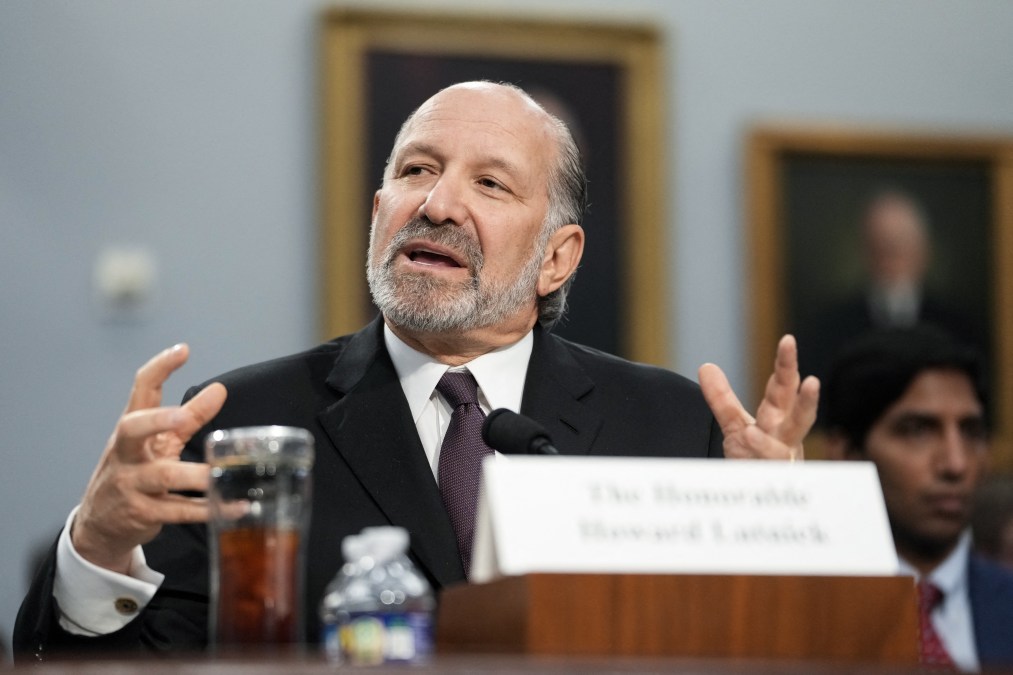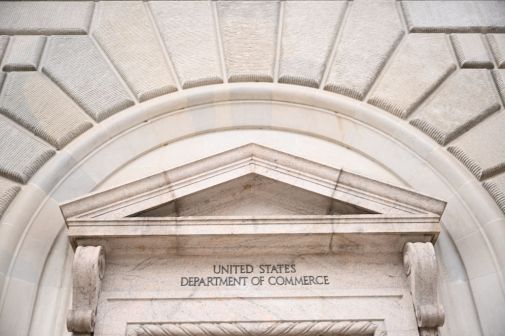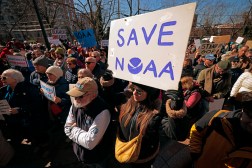Lutnick points to tech modernization plans as lawmakers question NWS staffing levels

Commerce Secretary Howard Lutnick pointed to plans to automate and centralize certain functions at the National Weather Service amid questions from lawmakers last week on staffing shortages at the agency.
The Trump administration’s hiring freeze and efforts to reduce the size of the federal government through firing probationary workers, deferred resignation and early retirements all came as NWS already had a history of staffing issues. According to numerous local and national news reports, current staffing levels, particularly at regional centers, are prompting concerns across the country about the agency’s ability to provide critical forecast information important to public safety.
Although the administration has recently given the agency an exemption to the freeze to hire more staff to address those needs, concerns over NWS still bled into the questions posed to Lutnick at budget hearings in both chambers of Congress, with lawmakers on both sides of the aisle probing the Commerce secretary for answers. In response, Lutnick both denied that the agency was understaffed and referenced plans to improve NWS with “technological advancements.”
During a House Appropriations Subcommittee on Commerce, Justice, Science, and Related Agencies on Thursday, Rep. Mark Alford, R-Mo., asked Lutnick whether regional centers like the one located in Pleasant Hill in his state are in danger of closing as a result of moves to AI and automation.
“A lot of my friends are meteorologists at these stations who have personal relationships with the people at NOAA and NWS. I think they’re a little concerned,” said Alford, a former TV news anchor. He further asked Lutnick: “Will these centers be closing, but the information — which is also life saving — be coming from a centralized location?”
Lutnick replied that it would be “both,” and continued: “I think there’ll be many centers that will stay, and will augment, and be bigger, and stronger, and more powerful. But the concept is we’ve got to be able to automate ourselves and back each other up.”
The Commerce secretary criticized the technology infrastructure at the local offices and said that currently, data stays within states when it should be available to be analyzed by meteorologists in other states as well. “That needs to change,” he said. “If I showed you the technology, you’d drop your head, embarrassed to be an American.”
Lutnick received similar questions from multiple lawmakers at the House hearing as well as at a hearing before its counterpart subcommittee in the Senate on Wednesday, including inquiries from Sens. Gary Peters, D-Mich., and Lisa Murkowski, R-Alaska. Those lawmakers often gave direct examples of the impacts from their states. For example, Chairman Hal Rogers, R-Ky., asked about the implications of the reduced staffing levels on forecasts, noting that Kentucky frequently experiences floods and tornadoes and recently lost 20 people during severe weather.
Lutnick said that “all weather collection technology is in full force and effect” at the agency and later said that NWS is at “full staff.” NWS, he said, employs 2,100 meteorologists and fewer than 130 took early retirement. “It is fake news and inappropriate to suggest a single meteorologist or hydrologist was fired,” Lutnick said.
With respect to the data the regional offices collect, he said the idea is to “automate” it and “put it on the cloud.” That way, “the 2,100 meteorologists we have, and the hundreds of hydrologists that we have can forecast the weather from central locations and back up each other and be more appropriate.”
“So I think the technological advancements we will make over the next year or two years will totally change these things,” Lutnick said.
But Rep. Grace Meng, D-N.Y., the ranking member of the committee, inquired about the numbers Lutnick provided with respect to staffing, noting that they are “really different from what’s been reported in the press,” and asked the Commerce secretary to provide a more accurate accounting.
In reply, Lutnick said “there were no layoffs” and less than 5% of people retired.
Lutnick’s figures differ from numbers reported by outlets such as CNN and NPR, which have said that the number of lost staff at the weather service was more than 550 and nearly 600, respectively. CNN, for its part, reported that those numbers were due to a combination of layoffs, early retirements and preexisting vacancies.
Commerce, like other agencies at the beginning of the Trump administration, fired workers who were considered “probationary” — those within one to sometimes two years of employment at an agency or those who had been recently promoted. FedScoop spoke to one of the fired probationary workers who had been a physical scientist at NWS for a story earlier this year on the impact of those probationary terminations at the National Oceanic and Atmospheric Administration.
The Department of Commerce didn’t respond to a request for further details about the agency’s automation and modernization plans and clarification on the number of positions impacted by probationary terminations, deferred resignation, and early retirement. An NWS spokeswoman, however, provided a statement on the weather agency’s efforts to address hiring issues.
Erica Grow Cei said that NOAA is addressing the effect of workers taking the early retirement option, while NWS is using short-term temporary duty assignments and is in the process of reassigning workers to fill roles in field locations with the greatest needs.
“Additionally, a targeted number of permanent, mission-critical field positions will soon be advertised under an exception to the Department-wide hiring freeze to further stabilize frontline operations,” she said.
Meanwhile, a bipartisan coalition of House lawmakers led by Rep. Mike Flood, R-Neb., on Friday introduced legislation that would speed up NWS hiring by granting it direct hire authority for public safety roles. That legislation, the Weather Workforce Improvement Act, would further authorize a report on staffing levels and wellbeing, per a press release.
John Sokich, a former director of congressional affairs at NWS who retired in early January, told FedScoop in an interview that while Lutnick is right that the agency needs automation and new technology, “it needs to be done deliberately and effectively and planned out.”
The decreased staffing levels — which he, too, estimated was roughly 575 positions — pose a challenge to those efforts, particularly given that some of those offices were “bare bones staffed” before the new administration came in.
Sokich also said that NWS Director Ken Graham was already in the process of coming up with a plan to transform the agency’s use of technology when the staffing changes began, and while AI forecasting models are getting better, workers with local expertise are important for extreme weather.
“That’s where the role is key for the National Weather Service is in these extreme events,” Sokich said. “Whether it’s heat, drought, floods, snowstorms, hurricanes, wildfires — all the extreme events — that’s where the human is absolutely needed in the process.”
The cuts at NOAA and its components have prompted public demonstrations, including one that took place on Wednesday last week outside of the Department of Commerce building in Washington.
Dozens of former workers and other NOAA supporters gathered to protest the terminations and proposed budget cuts to the agency. That demonstration drew speakers such as Reps. Jamie Raskin, D-Md., and Gabe Amo, D-R.I., as well as Gretchen Goldman, the president of the Union for Concerned Scientists.
In her remarks to the crowd, Goldman pointed to the impact of staffing cuts on local NWS offices and inability for some offices to now operate 24/7 as a result. “These are the cuts that have already happened,” Goldman said. “Any additional cuts now are even more dangerous. Saving NOAA means saving lives.”






